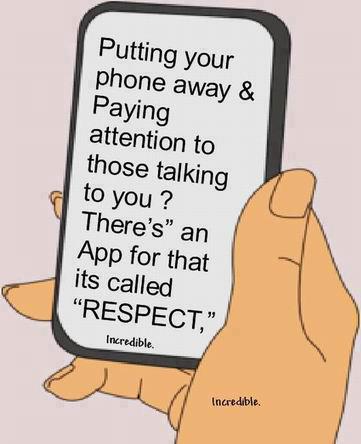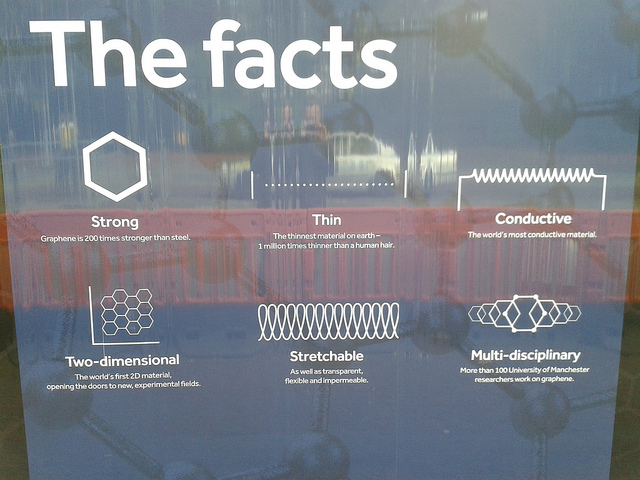|
|
|
Archive for May, 2014
Friday, May 30th, 2014
A Friday series exploring Startups and the people who make them go. Read all If the Shoe Fits posts here
 In the right frame of MAPping Company Success it says, “Have a quick question or just want to chat?” along with both email and phone number. In the right frame of MAPping Company Success it says, “Have a quick question or just want to chat?” along with both email and phone number.
A few weeks ago a “John,” a founder, called me to see if I had any idea why his turnover was so high.
In response to my questions he described his company’s culture, management style, product, etc.
I told him that assuming what he said was what was actually happening then something else was going on.
Since we are several thousand miles apart, we came up with the idea of using a stationary camcorder to tape the interactions; a “set it and forget it” approach to capture the norm and not performances.
A few days later he sent me a link to see the results.
I choked at the length, but it didn’t take that long to find what the likely problem was.
To see if my instinct was correct, I watched the entire nine hours on fast forward.
What I saw was that, almost without exception, during every interaction John had, whether with programmers or senior staff, he interrupted them to take calls or respond to texts.
We discussed the ramifications and effects of the constant interruptions and I asked him how he would feel if they had acted the same way.
He said it had happened to him and he usually felt annoyed, offended or both.
So I asked why they would feel any different.
John said that also explained why one senior developer said he preferred to work where he was shown some respect.
John had chalked it up to the developer’s age and that he couldn’t handle the casual atmosphere, but thinking back the guy had had a good relationship and no problems with the team.
I suggested that instead of saying anything he just change, i.e., pay attention and not interrupt, since actions speak louder than words.
I also sent him this image as a constant reminder.

John went further than changing; he called the most recent three who had left, apologized and said he would like them to come back.
One had already accepted a job, but the other two decided to give it another shot.
They both said that his candidness, honesty in recognizing the problem and sincere apology made it likely he would follow through.
Image credits: HikingArtist; via Imgfave
Posted in If the Shoe Fits, Personal Growth, Retention | No Comments »
Thursday, May 29th, 2014
 Ever noticed that most discussion and commentary about entrepreneurs center on innovation and little-to-none of it will, in fact, change the world. Ever noticed that most discussion and commentary about entrepreneurs center on innovation and little-to-none of it will, in fact, change the world.
Mostly they are about finding and rating personal and businesses services, locating partners, whether for hook-ups or long-term, and other such weighty matters.
Additionally, other than the bio-X stuff, innovation is dominated by software.
But software, including the giants like Facebook and Google haven’t fundamentally changed things as much as is stated—and both could be easily replaced relative to something as basic to our modern civilization as silicon.
Is there anything happening that does have the potential to fundamentally change our world?
Yes, there is and its name is graphene.
The American Chemical Society said in 2012 that graphene was discovered to be 200 times stronger than steel and so thin that a single ounce of it could cover 28 football fields. Chinese scientists have created a graphene aerogel, an ultralight material derived from a gel, that is one-seventh the weight of air. A cubic inch of the material could balance on one blade of grass.
Graphene is transparent, conductive, flexible and inexpensive.
The heavy lifting to develop graphene and uses for it is being done by old people in stogy, non-entrepreneurial companies, such as IBM, Nokia and SanDisk and especially Samsung along with a number of universities, with nary a twenty-something in sight.
Because the electronics industry so invested in silicon (software, including the cloud and apps run on hardware) it’s doubtful they will move quickly to embrace Graphene, in spite of its ability to truly revolutionize the entire industry.
Not so the Gates Foundation, which already paid to develop a graphene-based condom that is thin, light and impenetrable.
If your dream is to truly change the world, whether now or later, consider graphene.
Who knows, your idea could lead not just to a new company, but to an entirely new industry; not to employing a few thousand, but to jobs for millions.
Flickr image credit: Duncan Hill
Posted in Entrepreneurs, Innovation | 1 Comment »
Wednesday, May 28th, 2014

A LinkedIn post reminded me of something we all too often forget.
I’ve learned that the number one rule in sales is everybody wants what everybody wants and nobody wants what nobody wants. When you tell a buyer they can’t have something, they always want it more, but let that same customer know there’s plenty to go around and they’ll always go home to think about it.
It may be in the back of our minds, but we dance too much.
We spend time finding the fanciest or trendiest words to describe it.
Worse, we use ‘in’ words and industry-specific terms.
If the customer isn’t familiar with the language we choose she will spend her time puzzling out the meaning instead of buying.
Or she’ll just leave for a friendlier source.
Don’t get me wrong. Great stories that display the sexiness/romance/usefulness/value of your product or service are good—in their proper place.
But nothing projects authenticity, builds trust and creates urgency as perfectly as true clarity.
Flickr image credit: Alpha
Posted in Communication, Hiring | No Comments »
Tuesday, May 27th, 2014
 Wayne Jackson, CEO of software security firm Sonatype, has a favorite question he asks when interviewing. Wayne Jackson, CEO of software security firm Sonatype, has a favorite question he asks when interviewing.
“Can you tell me about a time when you almost gave up, how you felt about that, and what you did instead of giving up?”
My favorite question is also a three-parter, but looks at company instead of self.
“How did you/your team do X, did you agree with the approach, what would you have done differently if it was your decision.”
Both questions address the most important issue of an interview, how the candidate’s mind works, i.e., how she thinks.
Getting insight into how she thinks trumps any other information you can discover during the hiring process.
Understanding how a person thinks gives you insight as to how she will interface with the team, approach her work and handle challenges as they arise.
How she thinks is also key to how well she’ll fit your culture.
And cultural fit is the key to productivity, engagement, happiness and everything else.
Hat tip to KG Charles-Harris for sending me the Inc article.
Flickr image credit: bpsusf
Posted in Ducks In A Row, Hiring | No Comments »
Monday, May 26th, 2014

On Memorial Day we remember those who gave their lives in defense of their country.
This Memorial Day remember those who are living.
Remember them, honor them and do your company a favor by hiring them.
No question, it’s a slam dunk
Image credit: Unknown
Posted in Motivation | No Comments »
Friday, May 23rd, 2014
 If you don’t believe that there is a gender gap in the startup world’s so-called meritocracy entrepreneur Roger Huang begs to differ. If you don’t believe that there is a gender gap in the startup world’s so-called meritocracy entrepreneur Roger Huang begs to differ.
The internet is being shaped by males to be comfortable for other males. For those of us fighting for an open, and inclusive Web, this is something that should change, and it’ll certainly take more than a new application.
Huang’s post is worth reading because it is well annotated with links to the research and articles for the stats he cites.
I’ve written about it, too, and have come to the conclusion after years of listening to bosses that there is an unacknowledged underlying problem.
Most tech people recognize the problem, but don’t see the NIMBY side of it.
NIMBY means ‘not in my backyard’, meaning fix the problem without affecting me, e.g., create low income housing, but don’t put the housing in my neighborhood.
Backyards can refer to company and mindset.
That makes it pretty simple; if all bosses cleaned up their own backyard there wouldn’t be a problem.
So while problems in other people’s yards and on the wider stage loom large, a NIMBY mindset shows their own backyard as weed-free and thriving.
Flickr image credit: Jason White
Posted in Culture, If the Shoe Fits, Personal Growth | No Comments »
Thursday, May 22nd, 2014
 Yesterday was the first day of the SIIA Maximize Conference (Software and Internet Industry Association) and it was fantastic, in spite of starting with an apparent mistake. Mine, not theirs… Yesterday was the first day of the SIIA Maximize Conference (Software and Internet Industry Association) and it was fantastic, in spite of starting with an apparent mistake. Mine, not theirs…
I thought I had registered for Software Pricing’s 4-hour seminar with Jim Geisman, an expert in how to price software products, both SaaS, on-premise, embedded and other models. Apparently I hadn’t, since I wasn’t on the list, but In spite of that I was allowed to participate.
The session was intimate and excellent and Jim provided a lot of deep information and practical advice for how to think around the price-setting challenge. The audience was comprised of CEOs, CFOs, VPs of Marketing and Sales from large companies and startups alike. It was exceedingly interesting to see how pricing is a problem across several different sizes of companies and industry segments.
There is no question that Jim and his partner Chris Mele are the most knowledgeable people with regards to software pricing I’ve come across after more than two decades building software companies. The importance of pricing optimally—setting the price in a way that entices the highest number of customers without leaving money on the table—is a discipline that I’ll definitely pay more attention to in the future and I’m sure to use Jim’s services to ensure we don’t make any mistakes in this important area as we go to market.
SIIA’s Rhianna Collier and her team from the software division put together tremendous networking opportunities with both arranged meetings and speed dating sessions. It was some of the best networking I’ve experienced, yielding several additional companies to round out a set of initial test users for the system we’re launching in September. This is very exciting, as finding initial customers is one of the most challenging parts of releasing an enterprise product.
When selling to organizations, the challenge is to have managers and executives allocate their and their teams’ time and resources to iron out the wrinkles in a new product. This is not a trivial challenge for a startup.
The networking was valuable not only for me, but also for people from companies such as HP, InformationBuilders and SAP, with whom I spoke.
I’ll end with a story that proves once again just how small the world really is. As I was standing in the first part of the arranged networking I started speaking to Shannon Murray from Totango who was surprised when I knew of the company. It’s a small series B company that just raised 15.5m and are in an interesting space called Customer Success software.
I explained that I followed their blog, as probably thousands of others do. The blog is written by Ellis Luk who, together with their CEO Guy Nirpaz, has created a company blog that is helpful and instructive by enabling their customers to speak about their problems and how they are dealing with the challenges around enabling their customers. This is crucial for a SaaS business to get right as renewals are completely dependent on this.
The first day was very good and I’m looking forward to the following two.
Posted in Business info, Entrepreneurs, Strategy | No Comments »
Wednesday, May 21st, 2014

The first article I saw that confirmed (always a nice thing) my personal belief that multitasking was the best way increase incompetency was in the WSJ in 2003, although some of the first experiments were in 1999.
A growing body of scientific research shows one of jugglers’ favorite time-saving techniques, multitasking, can actually make you less efficient and, well, stupider.
Six years later research using students at Stanford, who grew up doing multiple things simultaneously, the verdict on multitasking, was reinforced. Most interesting was the proof that the more a person multitasked in their lives the worse they did on the tests.
Multitasking is not efficient, nor does it get more work done faster. Quite the opposite. One task interferes with another, so everything takes longer because the brain loses time–and accuracy–in repeatedly shifting its effort.
Around the same time David Strayer, a professor of psychology at the University of Utah, who has been studying attention—how it works and how it doesn’t—his whole career, made a surprising discovery.
Much to his surprise, he identified a tiny group he calls “supertaskers.”
In this case tiny really means tiny—around 2% of the population.
Worse, for the 98%, practice doesn’t help, since it turns out the ability is most likely genetic.
Of course, humans being humans, people assume they are part of that 2%.
“The ninety-eight per cent of us, we deceive ourselves. And we tend to overrate our ability to multitask.” (…) The better someone thought she was, the more likely it was that her performance was well below par.
The researchers have developed an online version of the test, so if you are curious or actually think you are part of that 2% you can take the test and know for sure.
Image credit: University of Newcastle in Australia/Strayer
Posted in Personal Growth | No Comments »
Tuesday, May 20th, 2014

The recent conversation I had with a group of managers was both eye-opening and depressing.
The managers were from a variety of companies, from startups to enterprise, most at mid-to-senior level.
They ranged from late twenties through fifties and, although not intentional, all were white.
The subject was diversity/inclusiveness.
Without exception, they claimed that their organization really was a meritocracy and that the media stories of gender/racial prejudice, especially in tech, were overblown or untrue.
Several commented that there was no real research that proved bias.
I pointed out a recent rigorous study that showed that the prejudice started long before careers.
Our analyses, which we reported recently in a second paper, revealed that the response rates did indeed depend on students’ race and gender identity.
I almost laughed when several held the tech startup world up as an example of how meritocracy worked, since nothing could be further from the truth.
The sad part is that they are good managers whose organizations are meritorious—at least in comparison to most.
I’m not sure if it’s naiveté, ignorance, wishful thinking or secret agreement, but when the people doing it right assume everyone else is, too, nothing will change.
Flickr image credit: Geordie Hagan
Posted in Culture, Ducks In A Row | No Comments »
Monday, May 19th, 2014

Most everyone who is at all involved with tech is aware that Tom Preston-Werner, founder and former CEO of GitHub, resigned over harassment charges; the complaints included actions by his wife, Theresa Preston-Werner.
In short, people felt pressured by her to contribute time/energy/knowledge pro bono to her own startup.
While they were cleared in the investigation, Theresa posted an apology that included the following.
I was the wife of the CEO, but that never entered my mind when I hung out with any GitHubbers.
That blind spot was my mistake. In my enthusiasm over my project, and my idealistic belief in the status-free community of GitHub, I failed to recognize that power structures cannot ever be obscured entirely. It’s a powerful lesson, and a mistake I will not repeat.
What the Preston-Werners learned the hard way is that bosses aren’t like the rest of us and the higher you are on the totem pole the more weight your words carry.
The following post dates to 2006, but it’s just as true now as then and I seriously doubt it will change in the future.
For Bosses, No Such Thing as “Casual”
Bosses can’t make casual comments because nothing is casual when it’s coming from “the boss.” In fact, “casual comment” in juxtaposition with “boss” is positively oxymoronic!
This is especially true when the boss in question is the CEO/president/owner. Quick story:
A CEO, who started as an engineer, casually remarked to a group of designers that he didn’t think the circuit design they were doing would work.
He said this while taking a shortcut though the department, and with no in-depth knowledge of the project or previous discussions. Just an off-the-cuff comment based on his own design experience—which was a couple of decades old.
The design group then told the engineering VP that they needed to rethink the entire design because the CEO had said it wouldn’t work.
The engineering VP first convinced her team that the design was fine and to go ahead (not an easy sell); she then told her boss (the CEO) to quit talking to the engineers and stay out of the department, since this wasn’t the first time this had happened.
The CEO agreed, although he couldn’t understand the problem, all he’d made was a casual comment. Obviously, he couldn’t know as much as the design team since he’s been out of engineering for many years and they should have understood that.
Stories such as this happen in every industry, every day. The unusual parts here are that, one, the VP said something and, two, the CEO actually listened.
The no casual comment rule applies at all levels in any company. If you have leverage, your comments carry weight to those below you—the more leverage, the more weight.
I hope bosses everywhere take this to heart, since few underlings are comfortable telling the person who can fire them to, essentially, shut up.
Flickr image credit: GDS Productions
Posted in Personal Growth | No Comments »
|
 Subscribe to
Subscribe to
MAPping Company Success
About Miki 
Clarify your exec summary, website, etc.
Have a quick question or just want to chat? Feel free to write or call me at 360.335.8054
The 12 Ingredients of a Fillable Req
CheatSheet for InterviewERS
CheatSheet for InterviewEEs™
Give your mind a rest. Here are 4 quick ways to get rid of kinks, break a logjam or juice your creativity!
Creative mousing
Bubblewrap!
Animal innovation
Brain teaser
The latest disaster is here at home; donate to the East Coast recovery efforts now!
Text REDCROSS to 90999 to make a $10 donation or call 00.733.2767. $10 really really does make a difference and you'll never miss it.
And always donate what you can whenever you can
The following accept cash and in-kind donations: Doctors Without Borders, UNICEF, Red Cross, World Food Program, Save the Children
*/
?>About Miki
About KG
Clarify your exec summary, website, marketing collateral, etc.
Have a question or just want to chat @ no cost? Feel free to write
Download useful assistance now.
Entrepreneurs face difficulties that are hard for most people to imagine, let alone understand. You can find anonymous help and connections that do understand at 7 cups of tea.
Crises never end.
$10 really does make a difference and you’ll never miss it,
while $10 a month has exponential power.
Always donate what you can whenever you can.
The following accept cash and in-kind donations:
|
 In the right frame of MAPping Company Success it says, “Have a quick question or just want to chat?” along with both email and phone number.
In the right frame of MAPping Company Success it says, “Have a quick question or just want to chat?” along with both email and phone number.






 Wayne Jackson, CEO of software security firm Sonatype, has a
Wayne Jackson, CEO of software security firm Sonatype, has a 
 Yesterday was the first day of the SIIA
Yesterday was the first day of the SIIA 



